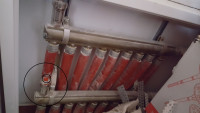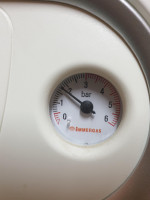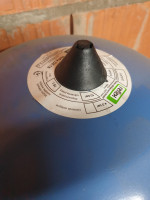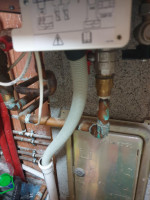Hello, the CO installation consists of radiators and floor heating.
The entire installation has been working properly for 6 years, for several days I have a problem with the water pressure in the furnace, it drops to zero and of course the E10 error (Immergas Victrix 24KW) crashes on the gas furnace. I allowed a little water, literally 2-3 liters, and the pressure jumped to 2.5 bar ... then slowly fell. After a few refills, I noticed water at one of the switchboards (to the floor) (as in the picture), it turned out that the red plastic heads were loose, not tightened and water was flowing from one of the lower ones (marked). night and around 11 am again an error on the stove and zero bars ...
Has the installation screwed up?
And why did it flip?
The entire installation has been working properly for 6 years, for several days I have a problem with the water pressure in the furnace, it drops to zero and of course the E10 error (Immergas Victrix 24KW) crashes on the gas furnace. I allowed a little water, literally 2-3 liters, and the pressure jumped to 2.5 bar ... then slowly fell. After a few refills, I noticed water at one of the switchboards (to the floor) (as in the picture), it turned out that the red plastic heads were loose, not tightened and water was flowing from one of the lower ones (marked). night and around 11 am again an error on the stove and zero bars ...
Has the installation screwed up?
And why did it flip?






